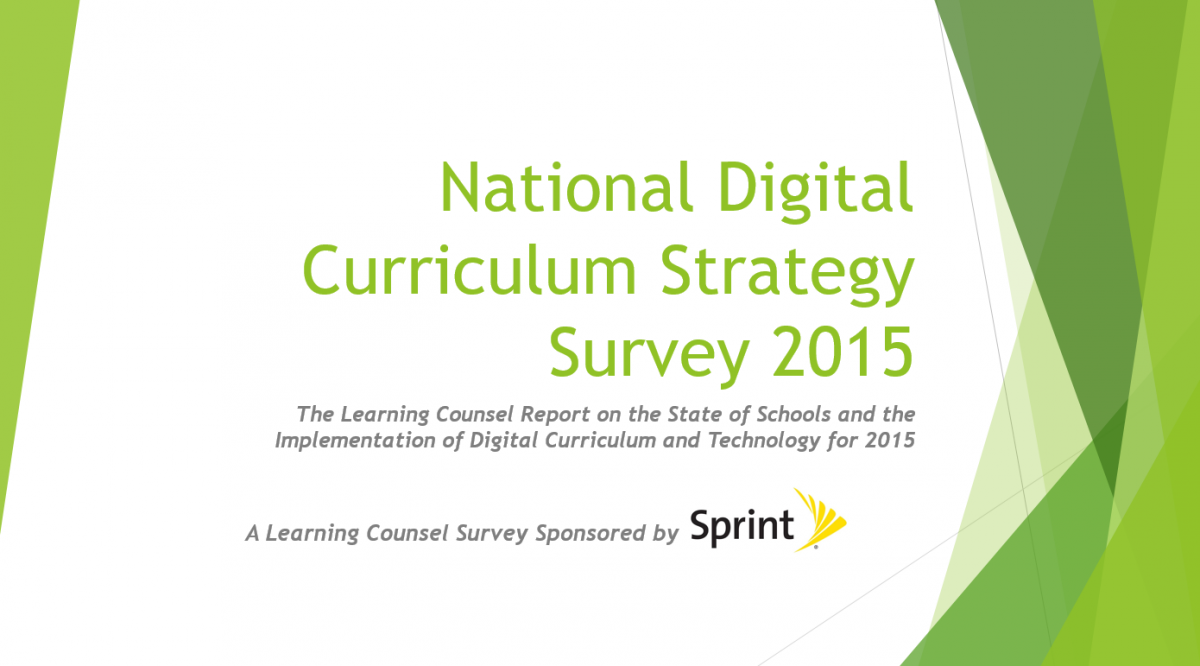2016 will be a HUGE year for EdTech. You better be battle-ready. Warn your finance directors to roadblock off as much marketing money as they can beg, borrow or steal to run ammunitions in and lots of air-cover for sales reps. Give your sales operations, proposal writers and administrative staff a heavy traffic warning that business will be coming in HOT.
Based on Learning Counsel research and direct observation, the buy “signals” are coming in from all directions.
Here’s why:
Every single city we held events in during 2015 we listened to audience members ask speakers or the group provocative buy-signal type questions.
These were as vague as “What are the proofs this will work?“ to as obvious buy-oriented as“When can your company provide service in our area?” or “Do you sell that by seat or annual subscription for the whole district?”
Comments by Superintendents (Minnesota, Phoenix, San Jose, Sacramento) that “I should buy that” referencing a product being presented by one company or another, in whispered remark during the live event to staff of the Learning Counsel.
In nearly every city, Learning Counsel were approached by various education executives during our Discussions events at the breaks, taken gently by elbow or shoulder and ushered into hushed side-conversations that went a lot like this:
“We’re making a move, see? We have to do this quickly,” said the earnest Education Executive.
“That’s great to hear!” said LC staff.
“Well, we’ve tried to get everything in one place, one publisher, one tech company, and we can’t do it,” said the Education Executive sadly.
“Yes, yes, so we hear, everywhere we go,” said LC staff with a sigh of commiseration. “Those days of single publisher are sorta over now, what with apps and dozens of other ways to go content-wise.”
“Yeah, yeah, so here is a piece of paper, can you just jot down a list of the top 10 products in each of these six (or more) categories, please?” said the Education Executive while pushing a pen and paper at us (or Surface Pro).
And so it goes. It doesn’t get more “operation-ready” than that. Being out in the fray, talking to the volumes of executives in education who are in the battlefield trying to get it all done—real reform with technology and digital curriculum—like the Learning Counsel is, brings it home that this is the time. The shift is now. Districts and schools and parents are ready for change and for new products that will transform how teaching and learning is being delivered.
If you haven’t sent forth your best sales troops then you either don’t know how to sell, or are blocked at the door for lack of a stiff marketing wind behind you. If that is the case then I just feel sorry for you because you could miss a once-in-a-lifetime opportunity to make good on what your company offers and sell the heck out of it.
Now is the time, and probably it's all up from here for a long while.
I have one caveat for you who are about to enter the battle. You will not win big being faint of heart. There are armies from everywhere, this is a war for attention unlike any other market on earth right now for sheer number of products fielded. You had better be good and have your story straight on appeal to the actual job of getting education done.
If you’re a pure-tech play, well, figure out how that helps the end game and be able to give that elevator pitch like a Navy Seal. Reps are out there right now with no backup and nowhere to turn for not being able to get a hold of people. Call backs in this wild jungle terrain are far and few between. The market looks to them like a frenzied Wall Street sell-off rush on the trading floor. There they stand, holding their commodity tickets, screaming but not being able to get buyer attention.
When a company asks me how to get an education executive’s attention, I tell them that, like any “Art of War” buff, they need a flank attack. If they haven’t read “Art of War” they’re no sales rep and will be trampled. If they can’t figure out a flank attack, they need to call me.
I’ll tell you a secret; I was not at all this bullish in 2014, nor entering 2015.
But by summertime 2015 you would have seen the shift in my gaze. Like the hardened lieutenant at the front line, I found the way (just ask my staff!)
 With this new view, combined with the hard evidence of our recently completed Digital Curriculum Strategy Survey, I can tell you that 2016 will be a great year for EdTech, better by far than any previous year.
With this new view, combined with the hard evidence of our recently completed Digital Curriculum Strategy Survey, I can tell you that 2016 will be a great year for EdTech, better by far than any previous year.
The research of note, was a national survey completed in October 2015. There were 541 executive level respondents who filled out an extensive list of detailed questions concerning technology, digital curriculum use, PD, infrastructure, homework, adoption and much more.
For just a taste of what was found: According to respondents, the top five barriers to adoption of digital curriculum are: 1) instructional design/curriculum design professional development; 2) digital curriculum systems training; 3) classroom pedagogy professional development; 4) inadequate budget to transition; and 5) teacher device use training.
Further:
- 64% said new positions have been created with roles and responsibilities to deal with the expansion of digital resources. (slide 16 of the research report)
- 73% of instructors spend between 1 and 6 hours of their week building their own digital learning content (slide 27 of the research report)
- 56% of the executives surveyed said there is NO regular analysis performed to find what is available to replace non-digital resources with the equivalent or improved version of what they are using, but in a digital format. (slide 27 of the research report)
- The highest percentage of schools that are set up with wireless infrastructure are elementary schools (73%) (slide 35 of the research report)
- 77% of districts and schools have implemented 1:1 programs (slide 37 of the research report)
- 59% of teachers complain of too many systems to interact with. (slide 38 of the research report)
- 79% of districts and schools use Google as their app platform. (slide 40 of the research report)
- 55% of study respondents have basic tool apps in use consistently grade-by-grade across the district (OneNote, Evernote, Prezi, OfficeMix, etc) (slide 40 of the research report)
- 67% of teachers spend 2-6+ hours searching for resources per week. (slide 43 of research report)
- 77% report using online testing and feedback for instructional purposes. (slide 49 of the research report)
The five digital curriculum policy controls considered most important by district and school administrators were found to be: 1) providing technology training for teachers; 2) advocating personalized paths of learning using resources; 3) providing ongoing professional development opportunities for applying digital learning; 4) advocating moving to more or all digital content; and 5) providing technology training for students.
The survey also asked about student data privacy policies, and found that 88.5% of respondents have a privacy policy in place. When asked if they are staffing positions to deal with expansion of digital resources 65% of school and districts said yes.
Purchase your copy of the complete survey report by writing to the Learning Counsel. $275 for the PowerPoint-and-text formatted Survey Report. $1,000 for the Survey Report and one-hour Conference Call Briefing by Learning Counsel Research Staff
Maybe we’ll see each other in the field. Here’s to a great, profitable, 2016.











